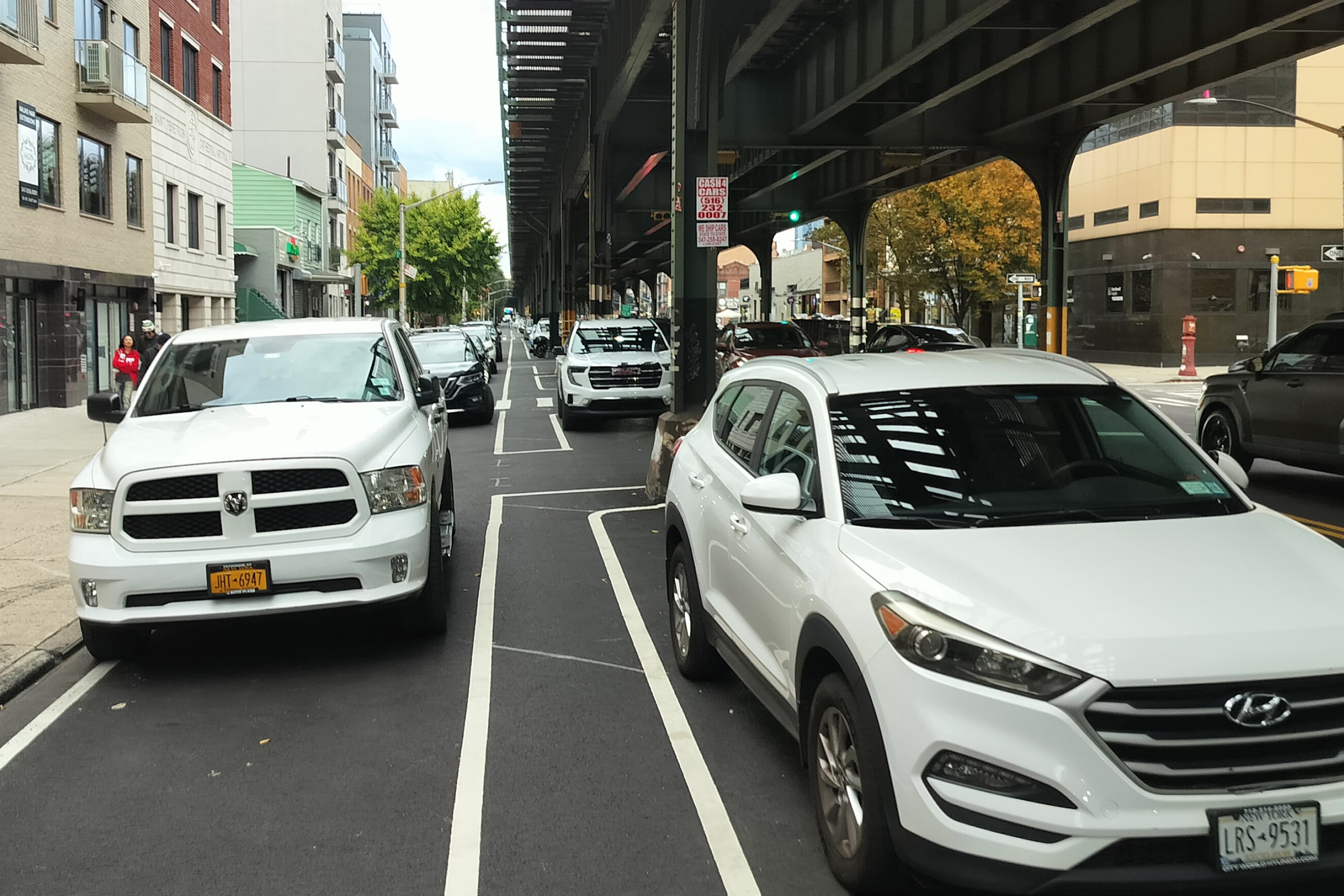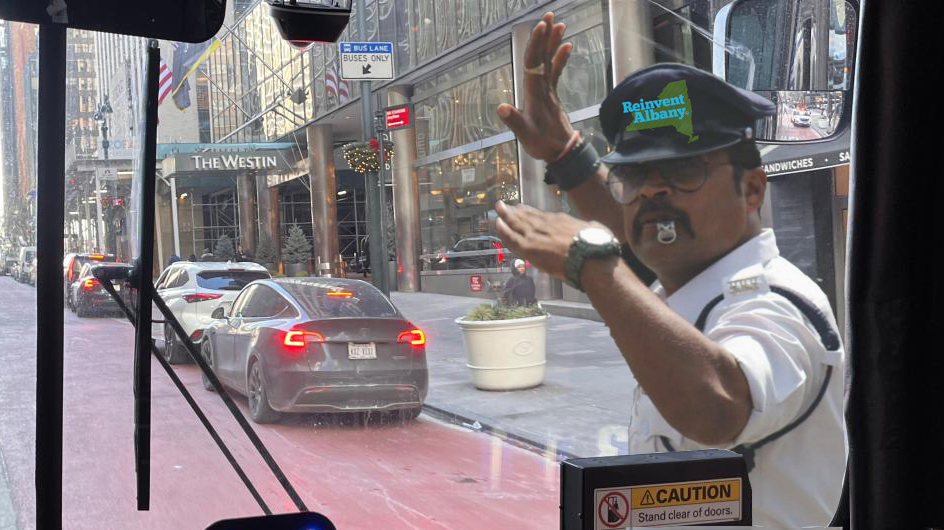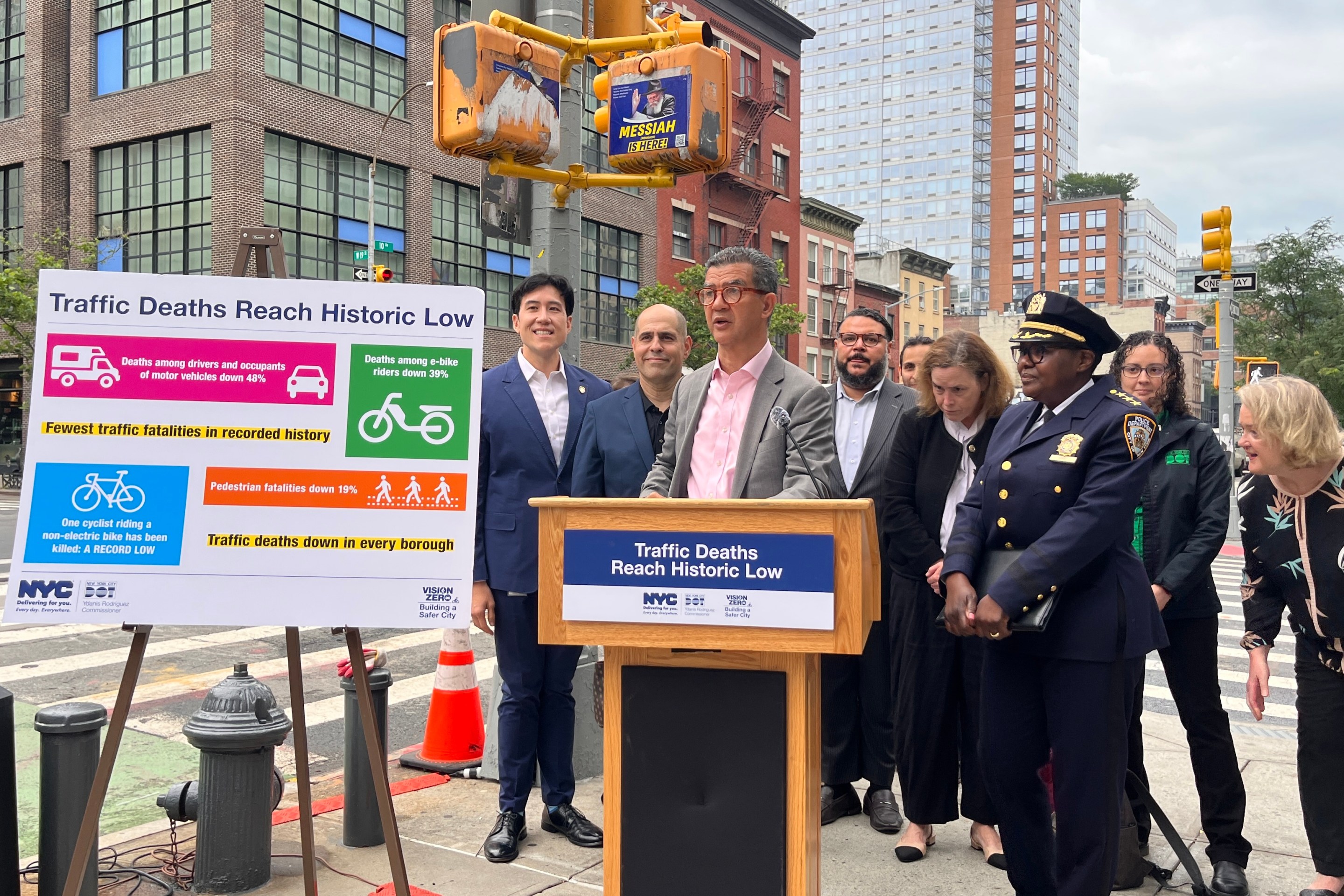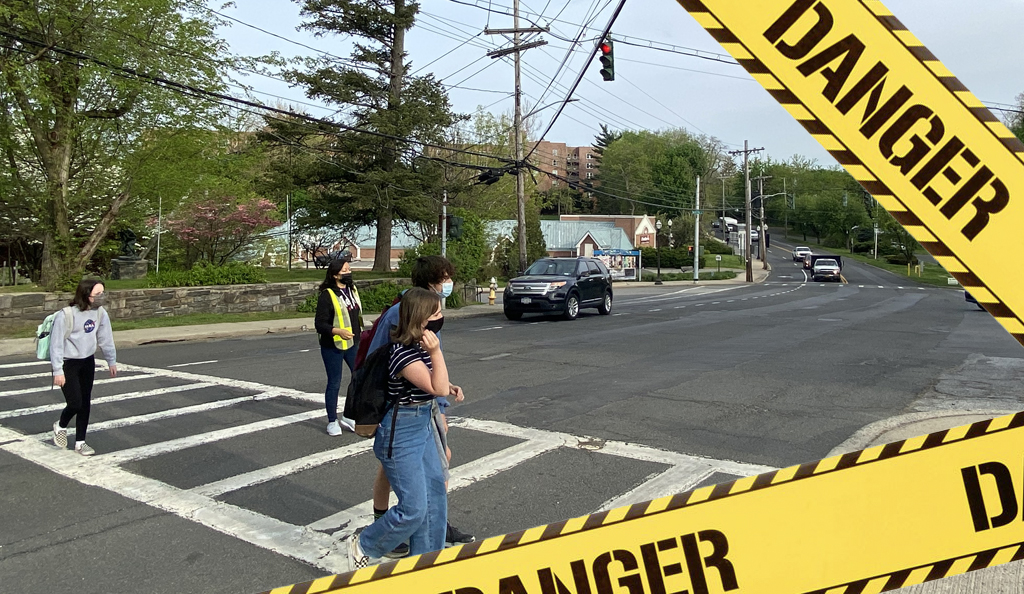The end of May is an important time for livable streets in New York -- and not just because of bike-share's Memorial Day launch. On May 31, Slow Zone applications are due to DOT. Grassroots groups have been working to build support for their applications among neighbors, businesses, elected officials, and community boards -- all with the goal of reducing dangerous speeding on local streets.
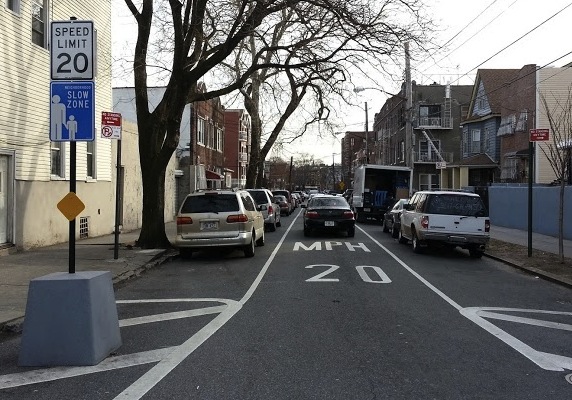
Speeding was the leading cause of traffic deaths in New York City last year, and the fatal crash rate increases four times faster than the corresponding increase in speed, according to the AAA Foundation for Traffic Safety.
Under the DOT program, Slow Zones are in primarily residential areas bounded by major barriers or streets, and cannot contain fire stations, hospitals or truck routes. In addition to the 20 mph speed limit, a Slow Zone area receives speed humps and new striping and signage to slow drivers.
A similar 20 mph zone program in London has prevented 27 traffic injuries or deaths each year, and Slow Zones have been shown to exert a spillover effect on driver speeds in adjacent neighborhoods there, as well.
Although there is no complete tally of applications underway right now, the program has remained popular since it began two years ago. "We've had dozens of folks tell us they're interested in applying," Transportation Alternatives spokesperson Michael Murphy told Streetsblog via e-mail. Last year more than 100 applications were submitted, with only 13 selected for implementation. The city's first Slow Zone was installed in the Claremont section of the Bronx in 2011.
DOT has not said how many Slow Zones it is aiming to green-light this year, but communities are lining up to be selected. On Tuesday evening, Brooklyn Community Board 1 voted to support a Slow Zone application from the Greenpoint Renaissance Enterprise Corporation for streets near Cooper Park. Another group is proposing a Slow Zone for the area around McGolrick Park.
"There's a lot of problems with trucks short-cutting through the neighborhood," GREC's Eric Bruzaitis said at Tuesday's meeting. He hopes the Cooper Park Slow Zone, in conjunction with a truck task force convened by Council Member Diana Reyna, can help calm traffic on residential streets. Last year, the neighborhood applied for a Slow Zone but was not selected. Bruzaitis modified this year's proposal so it covers a smaller area. In addition to the community board, elected officials including Reyna, Assembly Member Joe Lentol, and State Senator Martin Malavé Dilan have joined hundreds of residents and local businesses in signing on to the plan.
In the Bronx, Community Board 11 and the Northeast Bronx Association are working together on three Slow Zone applications in neighborhoods near Pelham Parkway. On the other side of the borough, Assembly Member Jeffrey Dinowitz, whose Riverdale Slow Zone application was selected for implementation last year, is leading the charge for a Slow Zone in the Norwood neighborhood, where advocates recently won a 20 mph speed limit on Williamsbridge Oval.
In Brooklyn, the Prospect Heights Neighborhood Development Council is seeking a Slow Zone, while in Manhattan, Tompkins Square Park & Playground Parents’ Association founder Chad Marlow is proposing a Slow Zone for Alphabet City, which received the support of Community Board 3.
Do you know of a Slow Zone application in your neighborhood? Tell us about it in the comments.
